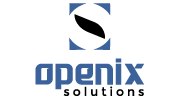
We live in the era of big data
and this undoubtedly affects the way of our life. But if in everyday life the volume of information is a completely controllable and manageable category due to simple solutions and systems, then in any organization the volumes of data become so large-scale that it is impossible to do without high-quality data storage and management.
In some areas, competent information management and prompt access to up-to-date data are of the utmost importance, since it serves to make vital decisions, and the speed of industry development has a direct impact on the standard of living of society as a whole. For example, the healthcare industry. We have already addressed the issue of global data governance in healthcare and wrote an article Why we need interoperability nowadays and why it is so important to highlight this issue today and be ready to influence the situation with our actions in this direction in order to influence the global development of the healthcare industry, which needs to be digitalized first of all.
Interoperability is the ability of various information systems, devices, and applications (systems) to access, exchange, integrate, and share data in a coordinated manner, within and between organizational, regional, and national boundaries, in order to ensure the timely and seamless portability of information and optimize the health of people and the population. worldwide.
Medical data exchange architecture, application interfaces, and standards ensure that data is accessed and shared appropriately and securely across the entire spectrum of services, in all applicable settings, and with relevant stakeholders, including individuals.
To be ready for global digitalization and optimize data exchange processes, each organization must be ready for such a transformation. First of all, it is necessary to provide a Master Data Management system, but not only for involvement in the development of the industry as a whole but also for more effective management of the organization.
Master Data Management involves identifying the data source, collecting, transforming, and normalizing data, preparing administration rules, detecting and correcting errors, consolidating, storing, distributing, and managing data.
Each of the automated control systems implemented to optimize a specific business process often uses its own master database. In many cases, it is the lack of a unified approach to the formation, processing, and storage of master data (and, in particular, reference information) that causes inconsistent and therefore ineffective actions both in solving internal problems of the organization and when working with patients and suppliers.
Data in the healthcare industry will not get easier in the future, with each passing moment its volume and variety are increasing exponentially. Healthcare faces unique challenges and with them unique data challenges.
Since healthcare data is unique in its complexity, it is clear that traditional approaches to healthcare data management do not work. A different approach is needed that can handle multiple sources, structured and unstructured data, inconsistency, volatility, and complexity in an ever-changing regulatory environment. The solution to this unpredictable change and complexity is a flexible healthcare-adapted approach.
MDM solves the most common data problems in healthcare organizations and improves operational efficiency, predicts and identifies gaps in clinical care, and provides a single source of reliable information about all provider data.
MDM implementation is a complex process that can take a long time and must be implemented in close collaboration with IT experts who will provide the best solution based on the context of your tasks and organization representatives who are subject matter experts. As with most software, the key to success is iterative implementation so that the business reaps a range of short-term benefits, while the complete project is a long-term process.




